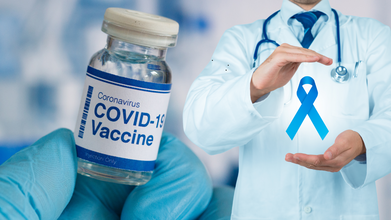- Health Conditions A-Z
- Health & Wellness
- Nutrition
- Fitness
- Health News
- Ayurveda
- Videos
- Medicine A-Z
- Parenting
- Web Stories
What Are The Fastest-Spreading Diseases Dominating In 2025? Science Reveals Early Symptoms

Credits: Health and me
When the COVID-19 pandemic swept the globe, many people instinctively turned to the 2011 film Contagion. What once felt like science fiction suddenly looked disturbingly familiar. The film’s accuracy in depicting how viruses travel—through handshakes, doorknobs, and elevator buttons—was a chilling reminder of how quickly infections can move in a connected world.
One line from Kate Winslet’s character stood out, every pathogen carries a number, R0 (R-nought), that tells us how many people, on average, one infected person will pass the disease to. A value above one means a disease can spread. A value below one suggests it will fizzle out over time.
That deceptively simple number, however, hides enormous complexity. Different diseases spread in very different ways: through coughing, sneezing, contaminated food, or even insect bites. And while some infections burn through populations at lightning speed, others move more slowly but cause devastating damage. Understanding the contagion scale isn’t just academic—it shapes how we protect ourselves, our families, and our communities.
What Is R0 Number?
R0 is not a fixed property of a pathogen—it reflects biology, behavior, and environment. Think of it as the interaction between how contagious the germ is, how people interact, and what protections are in place.
For example, a crowded subway system in winter gives respiratory viruses a much higher chance of spreading than the same virus in a rural outdoor community. Vaccination rates, cultural norms around close contact, and even building ventilation play a role.
Fastest-Spreading Highly Contagious Diseases
Still, the R0 scale gives us a useful way to rank which diseases have the highest potential to spread—and which, while less contagious, still carry grave risks.
Measles
No disease outpaces measles when it comes to raw transmissibility. With an R0 between 12 and 18, it sits at the very top of the contagion scale. To put that in perspective: one person with measles could, after just two rounds of transmission, set off a chain reaction infecting more than 300 people.
Part of measles’ power lies in how it spreads. The virus is airborne, carried in microscopic droplets that linger in the air for hours. You don’t even need to meet the infected person—walking into a room they left behind is enough for an unvaccinated individual to catch it. Worse, people with measles are infectious before they show symptoms, meaning isolation often comes too late.
Despite being preventable, measles has resurged in recent years, even in wealthy nations. Falling vaccination rates—driven by pandemic disruptions, conflict, and persistent vaccine misinformation—have left gaps in herd immunity. Beyond its immediate fever and rash, measles can cause pneumonia, seizures, blindness, and in rare cases, death.
Measles may lead the pack, but it isn’t alone in its ability to spread rapidly.
Pertussis (Whooping Cough)
With an R0 of 12 to 17, pertussis primarily affects children but can be transmitted by adults with milder symptoms. Severe coughing fits can lead to broken ribs, pneumonia, or even death in infants.
Chickenpox (Varicella)
Often dismissed as a childhood rite of passage, chickenpox has an R0 of 10 to 12. Though usually mild, it can cause serious complications such as encephalitis or bacterial infections, especially in adults.
COVID-19
Depending on the variant, COVID’s R0 has ranged from 2.5 in early strains to as high as 12 in Omicron subvariants. Its spread underscored how a “moderately contagious” pathogen can cripple global systems when paired with global travel and asymptomatic transmission.
While these diseases differ in severity, their shared trait is efficiency of spread. Each one demonstrates how quickly a community can be destabilized when vaccination or preventive strategies falter.
Not all deadly diseases spread like wildfire. Some move more slowly but pose equally serious threats.
Tuberculosis (TB)
Tuberculosis (TB), caused by Mycobacterium tuberculosis, has an R0 ranging from less than one to four. That lower figure reflects the fact that TB usually requires long, close exposure—often in households, shelters, or prisons. But the slower spread belies the challenge: TB is extremely difficult to treat, requiring at least six months of multi-drug therapy. Cases of drug-resistant TB are rising, threatening to undo decades of progress.
Ebola
Ebola, another disease with frightening lethality, has an R0 of just 1.5 to 2.5. It spreads only through direct contact with bodily fluids, which helps explain why outbreaks, while devastating, tend to remain geographically contained. Still, Ebola kills up to 90% of those it infects, making containment absolutely vital.
Diseases such as MERS, avian flu, and leprosy have R0 values below one, meaning they are unlikely to cause sustained outbreaks under current conditions. Yet their low spread does not equal low risk—when these pathogens do infect, they can cause severe complications or death.
How Diseases Spread?
Understanding modes of transmission is as important as R0 values. Respiratory droplets and aerosols drive infections like flu, COVID, and measles. Blood-borne and vector-borne diseases (HIV, malaria, Zika) move through different pathways—sexual contact, shared needles, or insect bites. Food- and water-borne illnesses such as cholera or hepatitis A highlight how sanitation and clean water infrastructure remain frontline defenses.
Every route of transmission offers a point of intervention. Handwashing, clean water, mosquito control, safe sex practices, and above all, vaccination programs are proven to reduce spread.
How To Build Herd Immunity?
No discussion of infectious spread is complete without herd immunity. When enough people in a population are immune either through vaccination or prior infection, the chain of transmission is broken. This protects not only the individual but also those who cannot be vaccinated, including infants, pregnant women, and people with compromised immune systems.
The resurgence of measles and pertussis is not due to new strains or failures of medicine it’s due to falling herd immunity. The collective shield works only if most people contribute.
The contagion scale reminds us that “contagious” is not the same as “dangerous.” A disease can spread quickly and cause little long-term harm, or spread slowly but devastate those it touches. Both demand vigilance.
What COVID-19 demonstrated, and what measles continues to prove, is that human behavior—whether it’s embracing vaccination, staying home when sick, or even improving ventilation in schools and workplaces—shapes the trajectory of outbreaks as much as the biology of the pathogen itself.
Could Covid-19 Vaccine Make Cancer Patients Live Longer?

Credits: Canva
A landmark study titled “COVID-19 Vaccine Linked to Longer Survival in Cancer Patients” has revealed that people with advanced lung or skin cancer who received an mRNA COVID-19 vaccine within 100 days of starting immunotherapy lived significantly longer than those who did not. Conducted by researchers from the University of Florida (UF) and the University of Texas MD Anderson Cancer Center, the findings were presented at the 2025 European Society for Medical Oncology Congress in Berlin and mark a major step in exploring how mRNA technology could strengthen cancer treatment.
A Milestone in mRNA Research
This study represents the culmination of more than a decade of UF research on mRNA-based cancer therapies. Lead investigator Dr Elias Sayour, a pediatric oncologist at UF Health, called the findings “extraordinary,” noting that the vaccine’s immune-boosting effect could help design a universal, off-the-shelf cancer vaccine capable of enhancing immunotherapy responses.
mRNA, or messenger RNA, is a molecule that carries genetic instructions to make proteins. It forms the basis of COVID vaccines developed during the pandemic, and scientists now believe this same mechanism could be harnessed to amplify the body’s cancer-fighting abilities.
How the Study Was Conducted
Researchers analyzed medical records of over 1,000 patients with stage III and IV non-small-cell lung cancer or metastatic melanoma treated at MD Anderson between 2019 and 2023. Of these, 180 lung-cancer patients and 43 melanoma patients received a COVID-19 mRNA vaccine within 100 days of starting immunotherapy. Their outcomes were compared with 704 and 167 unvaccinated patients, respectively.
The results were striking. Vaccinated lung-cancer patients showed a median survival of 37.3 months, nearly double the 20.6 months observed in unvaccinated counterparts. Among melanoma patients, survival rose from 26.7 months to about 30–40 months, with several patients still alive at data cut-off — suggesting an even greater long-term benefit.
Importantly, the effect was specific to mRNA COVID vaccines; flu and pneumonia shots did not produce similar outcomes.
The Science Behind the Boost
Earlier this year, Dr Sayour’s lab discovered that to trigger a strong immune attack, targeting a single tumor protein wasn’t necessary. Instead, stimulating the immune system as if fighting a viral infection worked better. When this nonspecific mRNA vaccine was combined with immune checkpoint inhibitors — drugs that “release the brakes” on immune cells — mice showed powerful antitumor responses.
Building on this, the team theorized that the COVID mRNA vaccine might act like an immune flare, mobilizing immune cells from tumor zones to lymph nodes where cancer defense is stronger. This mechanism, Sayour explained, could make previously unresponsive cancers respond to treatment.
Implications and Next Steps
Although this is an observational study and cannot yet prove causality, experts are optimistic. UF’s Dr Duane Mitchell emphasized that while more trials are needed, such a large survival benefit “is the type of treatment effect we rarely see.”
A large-scale clinical trial through the UF-led OneFlorida+ Research Network is now planned to verify these findings across hospitals in several U.S. states.
If confirmed, the discovery could reshape how cancer is treated — turning vaccines from preventive tools into active partners in therapy. For patients battling advanced cancers, this could mean something profoundly valuable: more time and renewed hope.
World Osteoporosis Day 2025: Theme, Origin, And Significance

Credits: Canva
Every year on October 20, World Osteoporosis Day is marked, to put the spotlight on osteoporosis. The day marks a year-long campaign, which is dedicated to raising global awareness of bone health, and the prevention, diagnosis and treatment of osteoporosis and related musculoskeletal diseases.
Osteoporosis is a serious condition where bones lose its density and strength, and it thus makes them fragile and more likely to break. It is often called the 'silent disease', and most people don't even realize that they have it until a fracture happens.
The most common fracture in this condition is in hip, spine, wrist, or shoulder. These fractures can result in long hospital stays, and lead to loss of independence, and reduced quality of life.
World Osteoporosis Day 2025 Theme
This year's theme is 'It's Unacceptable'.
This puts the spotlight on the persistent and preventable crisis in osteoporosis care.
This condition affects over 500 million people worldwide, and most remain severely underdiagnosed and undertreated. Up to 80% of patients with osteoporotic fractures do not receive any follow-up diagnosis or treatment.
This theme furthermore makes an effort for everyone to make noise for the silent disease.
The disease is more common among women, as 1 in 3 women, as compared to 1 in 5 men aged 50+ are prone to osteoporotic fracture in their remaining lifetime. These fractures could lead to chronic pain and disability, loss of independence, increased risk of further fractures, and even premature deaths.
Thus the theme 'It's Unacceptable', highlights that it is simply unacceptable that patients continue to receive inadequate care, and people are still not aware of the condition.
Origin Of World Osteoporosis Day
The World Osteoporosis Day was first launched in 1996 by the United Kingdom's National Osteoporosis Society, with support from the European Commission. The International Osteoporosis Foundation (IOF), then took over the global coordination in 1997, turning it into a worldwide awareness campaign that takes place annually on October 20. The World Health Organization (WHO) also co-sponsored the event in 1998 and 1999, helping to raise its international profile.
Significance of World Osteoporosis Day 2025
Why is it important to observe a day on this, internationally? The reason is, this condition is very common, is among the most frequent health events, yet not much talked about. The IOF notes that in women osteoporotic fractures are more common than breast cancer. Women who are over the age of 45 account for more days in hospital than many other diseases, if they are osteoporotic. This comparison is done with other chronic diseases, including diabetes, myocardial infarction, and even breast cancer, notes IOF.
For men, in many countries, osteoporotic fractures account for more hospital bed days than those due to prostrate cancer.
IOF notes that osteoporosis is not prioritized in healthcare policy, and that it continues to be underdiagnosed and undertreated, globally. Only 1 in 3 vertebral fractures come to clinical attention, and most spinal fractures are often diagnosed as simple 'back pain'. This is why there remains a high treatment gap. In Europe, 72% of women who are at a high risk of osteoporotic fractures do not receive treatment.
This is why awareness about this condition becomes more so important, especially when framing public policies, education campaigns, and preventative care, especially making people understand the importance of calcium and vitamin D.
Glenmark Recalls Birth Control Pills In US Over Manufacturing Issues

Credits: Canva
Glenmark, a leading Indian drugmaker, has recalled its products in the US over manufacturing issue, confirmed the US Food and Drug Administration (USFDA).
What Did The USFDA Say?
The USFDA released an Enforcement Report, which noted that the US-based unit of Glenmark Pharmaceuticals in recalling 26,928 packs of oral contraceptive medicines in the US. The company's unit based in Mahwah, New Jersey, has now recalled the affected lot of the following birth control pills:
- Viorele
- Desogestrel
- Ehinyl Estradiol
The report also noted that Ethinyl Estradiol tablets were recalled due to "failed impurities and degradation specifications". The affected drugs were produced in the company's Mumbai headquarters' Goa manufacturing facility. This is because India has the highest number of USFDA-compliant pharmaceutical plants outside of the US.
The drug firm also issued a notice for Class II nationwide recall on September 3, 2025.
What Does Class II Recall Mean?
The USFDA notes that recalls are actions taken by the firm to remove and product from the market and could be conducted by company's own initiative, or by the FDA request or order.
Class II recall means a situation in which the use of or the exposure to a violative product may cause temporary or medically reversible adverse health consequences or where the probability of serious adverse health consequence is remote.
What Are The Different Categories Of Recalls?
As per the USFDA, there are 5 different categories of recalls, namely:
- Class I Recall
- Class II Recall
- Class II Recall
- Market Withdrawal
- Medical Device Safety Alert
- Class I recall: a situation in which there is a reasonable probability that the use of or exposure to a violative product will cause serious adverse health consequences or death.
- Class II recall: a situation in which use of or exposure to a violative product may cause temporary or medically reversible adverse health consequences or where the probability of serious adverse health consequences is remote.
- Class III recall: a situation in which use of or exposure to a violative product is not likely to cause adverse health consequences.
- Market withdrawal: occurs when a product has a minor violation that would not be subject to FDA legal action. The firm removes the product from the market or corrects the violation. For example, a product removed from the market due to tampering, without evidence of manufacturing or distribution problems, would be a market withdrawal.
- Medical device safety alert: issued in situations where a medical device may present an unreasonable risk of substantial harm. In some case, these situations also are considered recalls.
Are There Any Other Drugs Being Recalled?
Dr Reddy's Laboratories, another major Indian drugmaker, has also recalled its muscle relaxant in the US. The company's Princeton, New Jersey-based subsidiary has recalled 571 vials of Succinylcholine Chloride Injection. The recall was initiated due to "out-of-specification results during the 6-month stability testing," according to USFDA.
© 2024 Bennett, Coleman & Company Limited

